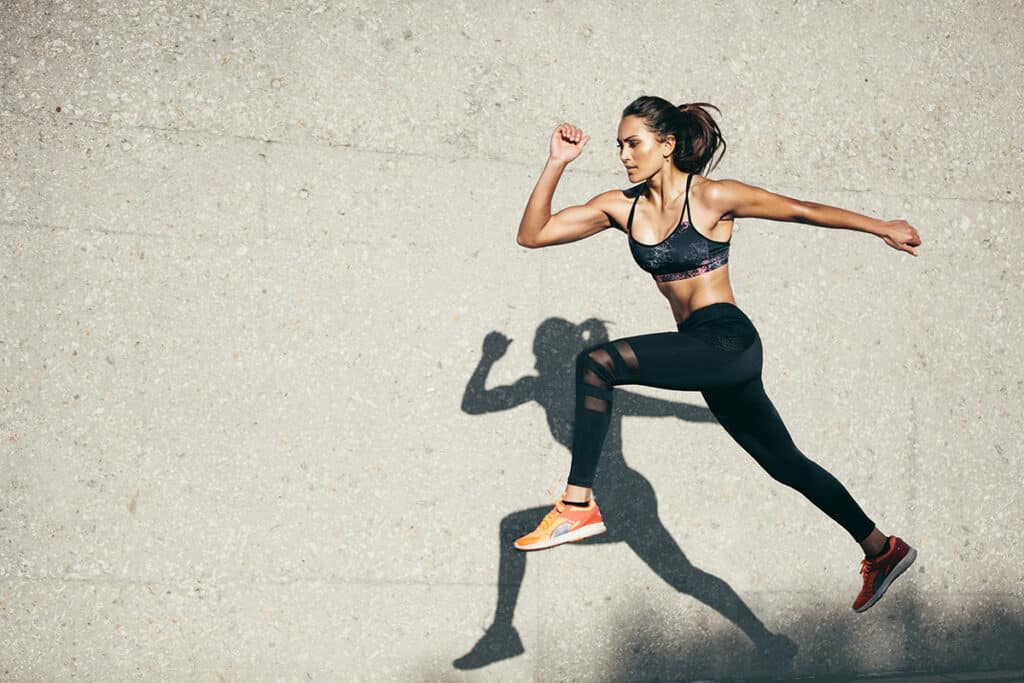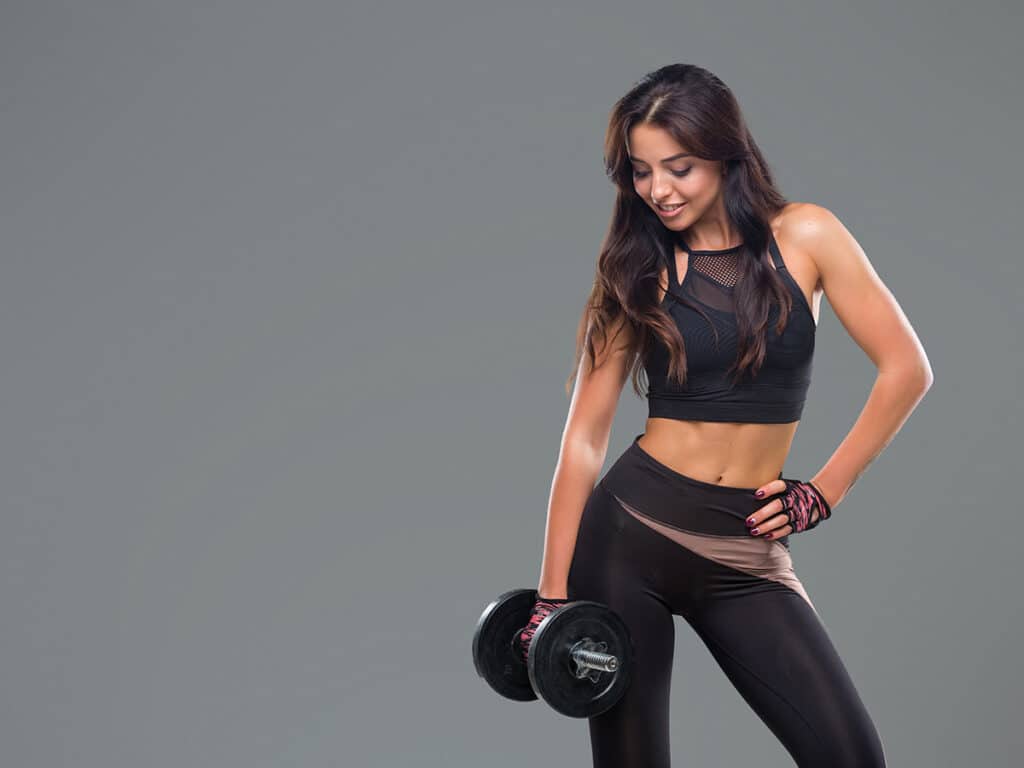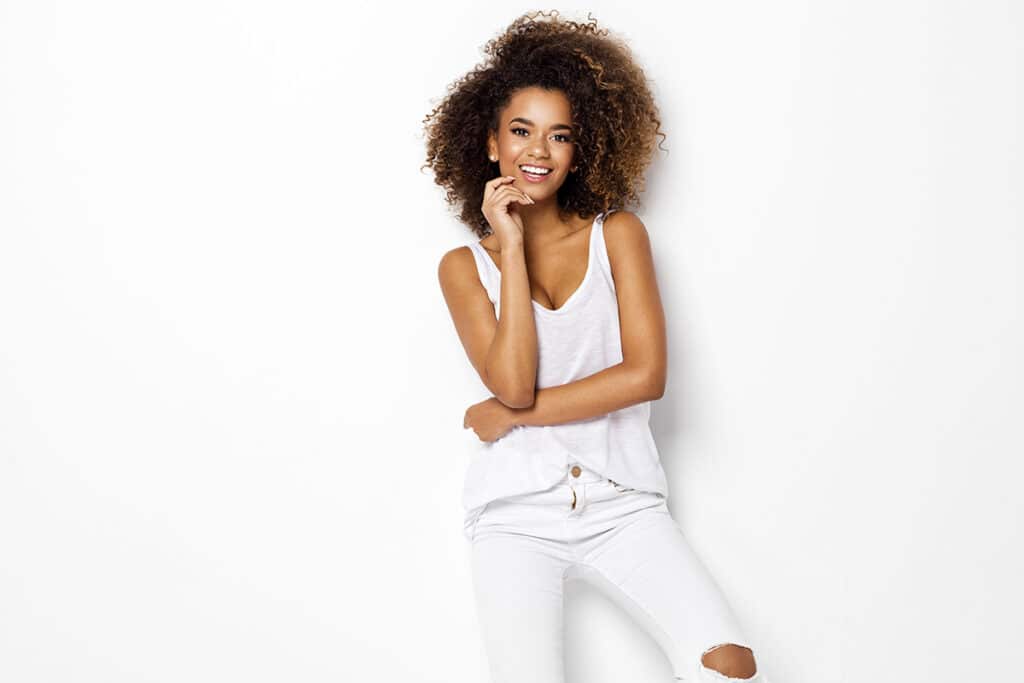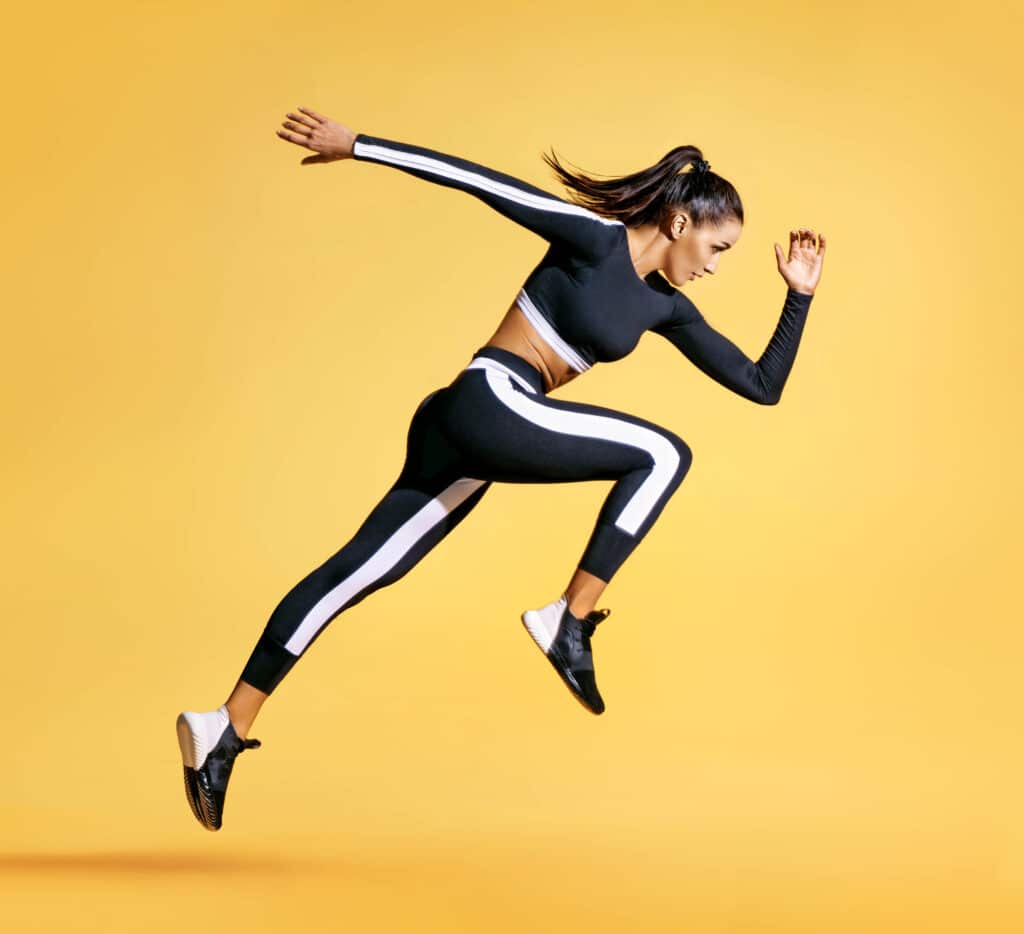Are Models Athletes?

Modelling has recently had a huge revamp to its image. No longer are prototypical models seen as famished young women forced to starve themselves in order to be the ideal size. Instead, models are being seen as strong, motivated people who put a lot of time and hard work into being the healthiest and fittest versions of themselves possible; they are being seen as athletes.
With the rise of social media, top models are able to give us an insight into their daily lives, and it’s clear that their jobs entail a lot more than you might think. Indeed, the healthy lifestyle of a top model has been compared by many to that of an athlete – and with such strict diets, vigorous fitness routines and gruelling schedules, it’s easy to see why.
As the discussion for the importance of good health (both physical and mental) and wellbeing continues to grow, more models are speaking out about what it takes to get to the top.
The Negative Perceptions of Modelling
Modelling has had a bad reputation in the past. There are plenty of stories depicting the negative side to modelling, where under-eating and excessive exercising have been commonly brought to light. We often see stories about models who have not looked after themselves properly in order to slim down and get jobs – in fact, it’s thought that 40% of fashion models suffer from an eating disorder (read our article here on how to encourage your teen model to eat healthily).
Fortunately, the industry (and the consumer) are changing. No longer is “skinny” the acceptable norm; instead, customers are calling out to see healthy, strong models advertising their favourite brands.
And as the consumer calls for these changes, we can see them being reflected in the choices made by more and more brands taking on models who are fit, strong and inspirational to their audience. Dove and Boots are choosing normal women as their models, while clothing brands like Lululemon have stated they are dedicated to helping, “people to live longer, healthier, fun lives.”
And it’s not just the models; airbrushing is on the decline as people crave to see more realistic, natural beauty – stretch marks and all.
Strong is the New Skinny

As the famous model Kate Moss once said, “nothing tastes as good as skinny feels”. This quote feels hugely misplaced today, as models put a huge emphasis on eating well to stay in shape.
Nowadays, focus is much more on being healthy and fit, not just “skinny”. Top models are expected to be in great physical condition, with toned limbs and a low (but healthy) percentage of body fat, while plus-size models are more popular than ever before.
Not only is this the desired look of a model, but it is also a healthy message to bring to the masses. We are at a time when the overall health and wellbeing of models is more important and openly discussed than it has been in the past.
And with social media, any potentially negative or unhealthy messages are quick to be called out.
Modelling Requires Strength, Energy and Stamina
As well as needing to look a certain way, models need to be fit and healthy in order to cope with the difficult aspects of their jobs.
If a model isn’t eating correctly, they will not be fuelling their body sufficiently and will struggle to make it through the working day. A healthy lifestyle is also essential for clear skin and nourished hair, as well as the stamina to endure long shoots and potentially weighty clothing/props. The Victoria’s Secret models have famously commented numerous times on the weight of the wings they have to wear during shows – they are said to weigh up to 27 pounds. They ensure their workout routines give them the strength required to carry these weighty props for long lengths of time.
It’s also thought that modelling requires a lot of “waiting around” and, while that is sometimes true, it also comes with a lot of standing and holding what can be uncomfortable positions for long periods of time in order to get the desired shots. Holding such positions requires core body strength and strong muscles, which can only be achieved with exercise and a good diet.
As well as this, models can have packed schedules that require them to do plenty of travelling with little rest between jobs. They need a healthy system to keep colds at bay, adjust to different time zones, survive on little sleep and support them during hectic periods.
There is More to Modelling Than You Think

Not only do they work hard on their physical appearance, but they also work hard on their mental wellbeing in order to cope with the knock-backs and potential negativity that can come from such a competitive industry. Models face a lot of criticism and it’s important they stay in a positive mind space in order to be able to brush it off. Anxiety and self-doubt are rife in an industry where looks are everything, and good mental health is just as important as being physically capable. Athletes, too, must train their minds as well as their bodies in order to deal with the high pressures of their jobs and the potential losses they face.
Models also require a huge amount of determination and mental strength to stick to their rigid diet plans and exercise routines – another athlete trait. While most of us can cope with a few weeks of strict dieting and workouts, it takes far more willpower and determination to successfully complete the eating and training regimens some of the world’s top models undertake, sometimes for months before a show. A model’s diet can consist of gruelling exercise routines 7 days a week (sometimes twice a day), as well as strictly controlled, personalised diet plans free from junk food, alcohol and even vegetables that grow below ground (they’re supposedly harder to digest).
More Than Just a Model
Because models are now able to share what their jobs really consist of, they are no longer seen as “just models” anymore. With the rise in social media, many models are able to showcase what they’ve learnt during their time in the business. They are starting to be seen as nutritionists, fitness gurus, skincare experts, makeup artists and more (Miranda Kerr has her own skincare line, Caesar Casier has written a cookbook, Kate Moss became a fashion designer).
It’s impossible for these models to have not picked up expert tips and tricks while working with such esteemed professionals on a one-to-one basis for so long. Just like athletes, models are working with the best in the business and are able to share their expertise. Modelling is far more than just standing in front of a camera; like a jigsaw puzzle, it requires many pieces (exercise, fitness, good mental health) to make the whole picture.
How They Do It
Ask any model what her diet consists of and it is usually a mixture of green smoothies, proteins and lean meats more often seen in the cookbook of a nutritionist, gym fanatic – or trained Olympian.
Just like professional athletes, top models are required to maintain a certain level of fitness year-round, which they do with controlled diets and catered fitness routines.
And while most models are content with having a balanced lifestyle the majority of the time, some top models choose to up the ante and “work like athletes” on the lead up to big shows.
Victoria’s Secret
Possibly the most famous fashion show in the world is run by Victoria’s Secret, a famous lingerie brand whose legendary shows get broadcast worldwide. Their models have famously said they work out “like athletes” during the lead-up to a show. Some have stated they work out 7 days a week, sometimes twice a day, in order to tone their physiques for the catwalk.
VS models work with nutritionists, personal trainers and masseuses (to help with sore, aching muscles) up to 3 months before a show. They’re also said to take a host of different health supplements in order to feed their bodies the exact nutrients and minerals they need to be in peak condition.
VS Shows own creative director, Sophia Neophitou-Apostolou, said, “It’s like being an Olympian – they have to be in peak condition.” Alessandra Ambrosio, a VS supermodel, once said, “You work out as an athlete. All your mind, all your everything goes into it.”
Even the model’s trainer, Dan Roberts, said, “I treat their bodies like athletes and prepare for shows through scientifically designed nutrition and exercise plans.”
Could this just be an exaggeration? Those who have attempted the pre-show diet don’t think so. Blogger Poppy Cross attempted the Victoria’s Secret pre-show diet/fitness routine and claimed, “…to be catwalk-ready requires a military mind and athlete’s performance.”
Models VS Athletes

VS models are stated to have no more than 18% body fat. Athletes have between 14-20%, so on paper these top models could be compared to world-class athletes.
Athletes, however, are training for something in particular. They require strength, skill and endurance to perform achievements no regular person could attain. While a model trains to appear a certain way, athletes must train as well as use sports-specific drills to perform a certain way, ingraining these skills into usable athletic feats.
Despite this, it appears more brands are recognising models for their athletic capabilities. Brands including Nike, Adidas and Puma have all recently used top models over athletes in their campaigns.
Social Media
But this is more likely due to the fact models have a better grasp of the social media world, and therefore have more followers and a better reach to potential customers. In fact, it is not uncommon for athletes (female in particular) to be “replaced” with models; even the world’s top female athletes like Maria Sharapova do not have as big a reach on social media as top models like the Hadid sisters.
It’s also thought that models are being chosen over athletes because of their covetable lifestyles. The continued development of ‘athleisure’ means brands require people who reflect the leisure/luxury aspect of the branding, as well as the physical side. And with their enviable physiques and excellent work ethics, who better than a top model?
Basically, a brand choosing a top model over an athlete is a way to establish the aspirational aspects of the brands while also guaranteeing maximum exposure.
Backlash
The choice to pick models over athletes, however, did not go unnoticed. Many customers voiced upset, claiming that the brands were sending a message that being athletic is more about how you look than performance. The choice alienated those customers who believe in diversity and integrity in advertising.
It was also a confusing move because the top models chosen for the athletic campaigns are notoriously famous for having almost impossible-to-achieve looks. The average woman does not have the same measurements as a top model; by showcasing their clothing on such rare body types, it was not showing how the product would fit the average consumer. They were also unable to see how the product performed in motion, and as the customer would assumedly be purchasing activewear to wear when participating in athletic activity, it would likely have been more sensible to showcase the items on a more realistic, functional body type.
Are They Really Comparable?
According to the models, professionals who assist them, and those who have attempted it, the exercise & diet regime of a pre-show top model requires the same kind of physical stamina, mental focus and dedication most often seen in high-performing athletes. But there is a huge difference between the two in terms of their goals – one is working to look a certain way, while the other works to perform a certain way.
While both undoubtedly work extremely hard, it’s impossible to compare them when they are both working to achieve such different goals. The key here is balance. The average person will find it impossible to follow the lifestyle of a top model or a professional athlete because they will lack the time, money or incentive to live like them. Top models and athletes look and perform the way they do because it is their job to do so. As long as both are achieving their goals in healthy ways, both should be aspirational figures.